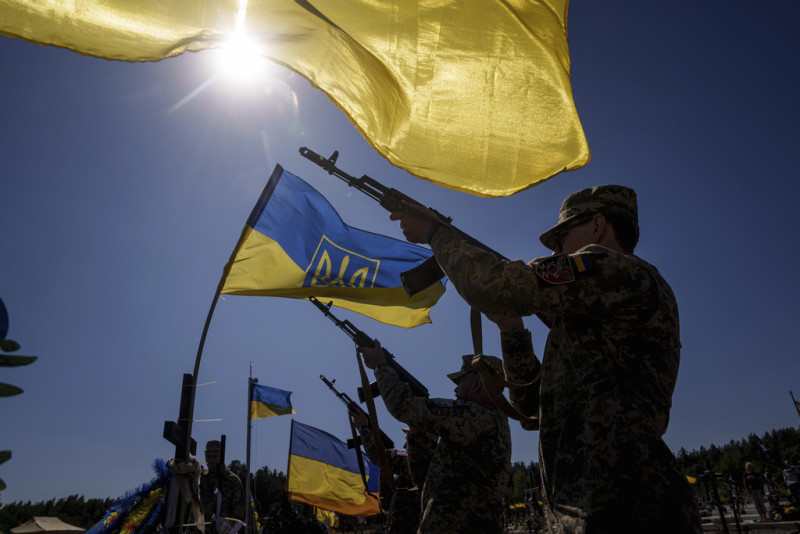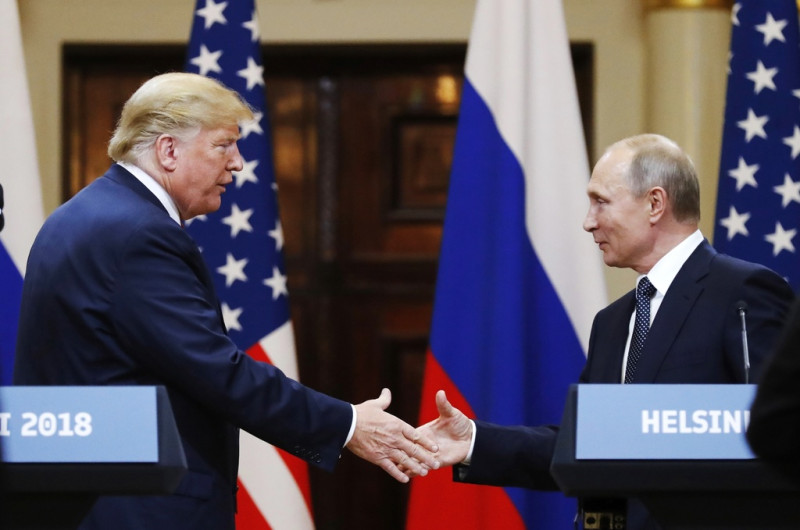At Tuesday’s meeting in Riyadh, the future of Ukraine is at stake – Donald Trump has not revealed a clear framework of proposals to be submitted for negotiation
Ukraine and the United States will hold critical talks in Saudi Arabia on Tuesday to discuss a possible framework for the end of the war. This meeting comes at a crucial moment, as Russia has intensified its attacks in an effort to make as many profits as possible and deprive Kiev every negotiating advantage.
Ukraine and its allies hope that the US government’s shift under Donald Trump is a pressure tool to draw Kiev on the negotiating table. That is, the White House simply freezes military assistance and exchange of information, requires about half the country’s mineral wealth as a repayment of a supposed debt and waits for a public apology to its president, as a negotiating tactic. That all this is just harsh rhetoric before a difficult deal.
But, as CNN notes in its analysis, a deeper change is evident, a change that Europe was reluctant to accept and now trying to adapt. The Trump government does not see itself as an ally of Ukraine and its European supporters, but as a mediator between them and Moscow, in the hope of restoring Russia to the international stage. Trump has stated that he is “seriously considering” imposing new sanctions on Moscow. However, it has not applied them. So far, Russia has “tasted only carrots and has not felt the whip”.
The pressure exerted so far before any agreement is that of the contractor to his subcontractors – America to Ukraine and Europe – adapting the terms to create a more attractive proposal for Russia. The Summit in Riyadh on Tuesday, including US Secretary of State Marco Rubio, and National Security Advisor Mike Walts, and Ukrainian President Volodimir Zelenski, hopes that the Kievian relationship will be restored.
Too much that will judge the outcome of the war depend on this meeting. Personal rivalries must be neglected. An agreement on rare land and other minerals – which, according to the latest draft, is essentially bail but an indication of US ambitions for Ukraine’s natural wealth – must be signed. And, most importantly, the White House has to reveal what kind of peace has in mind.
What agreement does Trump want
This is the question raised by Trump’s insistence on committing Zelenski to “commit to peace”. What exactly does Trump mean? Does it refer to the European Peace Plan, which so far includes exchange of captives, partial ceasefire in the sea, in air and energy infrastructure, followed by a limited European peacekeeping power? Russian officials have already rejected much of it. Or does it mean another version of peace that can be shaped between Moscow and Washington, without Europe or Ukraine on the negotiating table?
This last perspective should be the most alarming for European security and Ukrainian domination. Keith Kogg, a Trump envoy to Ukraine and Russia, denied that a draft agreement discussed in March 2022 in Constantinople – a hasty peace attempt that collapsed in the early stages of war due to the slaughter in Irpin. However, he described it as “starting point, at least”.
This proposed agreement demanded that Ukraine abandon its ambitions to join NATO, a target that is now registered in the country’s constitution. The draft agreement also required significant cultural changes, the least extreme of which was the establishment of Russians as an official language.
But above all, he attempted to set limits on the armed forces that Ukraine could maintain, making them significantly smaller than the huge Russian army. In essence, this plan was a form of tradition. Not in the sense of subordination to peace, but by undermining Ukraine’s ability to defend itself essentially if Russia – as Ukraine says it has done more than 20 times in the last decade – violated a truce and attacking again.
The pressure exerted on Ukraine suggests that Tuesday’s meeting in Riyadh – which is already at stake after the devastating development at the Oval Office just over a week ago – will not be a simple moment of reconciliation and typical handshakes. It may be revealed in the end what kind of peace is envisioned by Trump and to what extent it reflects Moscow’s ambitions.
Europe’s future security depends on this agreement. The world of businesses that Trump is used to is a world that seeks to make a purchase or contract attractive to the other side. He may have fired the head of the subcontractor if he did not like the counterparty and the discussion of whether Zelenski is suitable for his office. It may have been more hard to make their terms to improve profit margins, as it did by freezing military assistance. Perhaps he was collapsing his potential customer, who at the present time is his reluctance to talk badly about Putin.
However, such an agreement would ultimately concern the purchase or construction of material things – a simple and predictable sequence of actions or a change in property ownership, protected and guaranteed by lawyers and courts, by the rule of law. If the other side violated the agreement, Trump could move legally. The previous and the procedures were clearly defined, and the rule of law was on its side to ensure compliance with the terms of the agreement.
Russia is not a large fan of the rule of law. She usually negotiates to save time to promote her military goals. It occupied the eastern Ukrainian city of Debalcev literally in the early days of a truce in 2015, which had been negotiated after its limited invasion of Ukraine last year. Putin was strengthened in the KGB and publicly denied that he was his own troops who invaded Crimea in 2014 before admitting it laughing a few years later. If it were a business, its credit rating would probably be precarious.
But Trump’s belief that Putin can be reliable and wants peace, is now shaping US policy and redefines America’s role in the biggest war in Europe since the 1940s.
The damage that has caused this psychological blow has already begun to appear. The Ukrainian forces are in danger in the Kursk area and may lose this small strip of Russian soil, which was their only negotiating paper on the talks table. If they fall, the North Korean and Russian troops fighting there can then turn their attention to the rest of the front of the front, where Moscow has been making slow progress for months.
Ballistic rocket attacks and drones have caused this weekend scary civil losses, even after Trump’s threat of sanctions in Moscow due to Ukraine’s “pounding”, and the situation can be exacerbated as the US tackle is reduced by the US. for the air defense of its cities.
This week, we may be learning details about the “unclear” peace that Trump is seeking. And then, there is fear of these meetings for negotiations to reveal a gloomy future for Ukraine.
Source :Skai
With a wealth of experience honed over 4+ years in journalism, I bring a seasoned voice to the world of news. Currently, I work as a freelance writer and editor, always seeking new opportunities to tell compelling stories in the field of world news.












